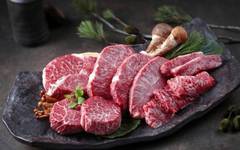
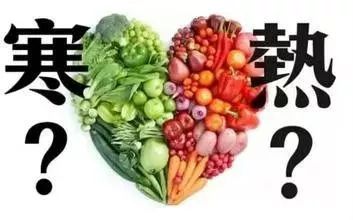
Do you often see certain foods labeled as hot or cold, but forget when it comes time to purchase ingredients?
If you frequently experience symptoms such as indigestion, loose stools, and sensitivity to cold, you likely have a “cold constitution”. It is advisable to limit the intake of cold foods.
If you often suffer from sore throats, stomach heat causing toothaches, carbuncles, irritability, and constipation, you likely have a “hot constitution” and should reduce your consumption of hot foods.
Eating correctly is more important than eating expensively; let’s learn how to identify the cold and hot properties of foods!
Meat: Poultry is generally hot in nature
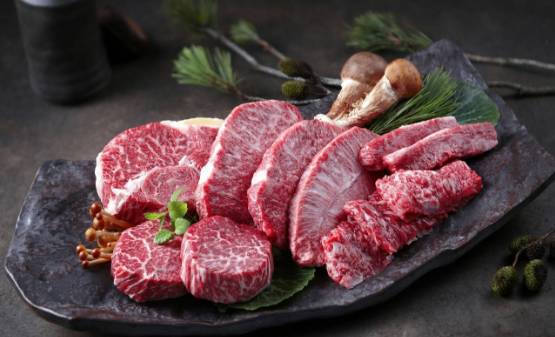
To determine the cold or hot nature of meat, we can refer to a saying from the “Huangdi Neijing” (Yellow Emperor’s Inner Canon): “Yin is quiet, Yang is dry”.
Generally speaking, meat is relatively hard to digest, which makes it more yin in nature. This means that the body expends more energy to convert this type of food into usable energy. Some varieties, if well-digested, can even have a warming effect, such as shrimp. The effects should not be confused with their nature.
1. Land Animals
Meat from land animals is mostly hot in nature, such as lamb, chicken, rabbit, and venison. The faster the animal runs, the hotter its nature.
2. Flying Birds
Meat from birds is generally hot, as they require significant energy to fly, making their heat nature higher than that of land animals like lamb. Game birds are often very hot.
3. Aquatic Animals
Fish and shrimp that swim continuously in water are hot in nature, while clams, crabs, and sea cucumbers that are less active in water are generally cool.
Fruits: Most summer fruits are cold
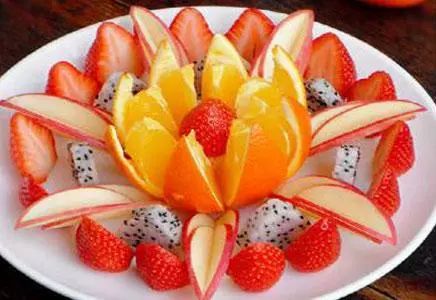
The properties of fruits can be roughly divided into three categories: cold, warm, and neutral.
1. Cold Fruits
Cold fruits include watermelon, kiwi, banana, and mangosteen, which can be described as having a “cold nature”.
If you have a constitution that is more yin, consuming too many of these fruits may lead to symptoms like indigestion, loose stools, and sensitivity to cold, while those with a hot constitution can consume these cold fruits in moderation.
2. Warm Fruits
Warm fruits include lychee, durian, mango, and pineapple, which can be aptly described as “fiery”.
Those who frequently experience sore throats, stomach heat causing toothaches, carbuncles, irritability, and constipation should limit their intake of these fruits, while those with a cold constitution can use them to nourish their bodies.
3. Neutral Fruits
Fruits that are sweet and neutral, neither cold nor hot, include peaches, apples, and grapes. These fruits are considered “gentle and mild” and can be consumed by all types of people in moderation.
The cooling effect of mangosteen can counteract the heat of durian; if you consume too much durian and feel overheated, eating a few mangosteens can alleviate discomfort, balancing cold and heat to protect the body.
Vegetables: Red, spicy, and terrestrial plants are mostly hot
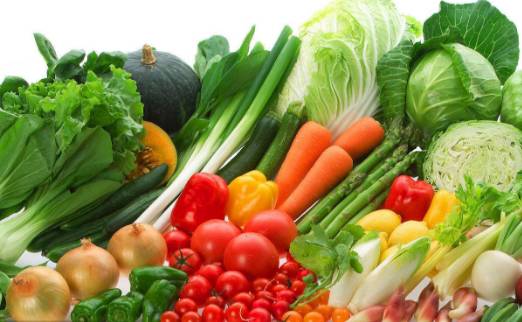
1. Look at the Color
Green plants like mung beans and green vegetables are generally cold in nature; red plants like chili peppers and black pepper are hot.
2. Look at the Taste
Sweet and spicy foods, which receive more sunlight, are mostly hot, such as garlic. In contrast, bitter and sour foods are generally cold, like bitter melon and bitter herbs.
3. Aquatic Plants are Cold
Aquatic plants are mostly cold, such as lotus root, kelp, and nori. Terrestrial foods, which have been buried in the soil for a long time and are drought-resistant, tend to be hot, such as peanuts, potatoes, yams, and ginger.
Today, discussing the cold and hot properties of food means that certain foods should not be consumed excessively; for example, people with a hot constitution should eat less durian, but it does not mean they cannot eat it at all.
The simple rule for a diverse and balanced diet is: eat everything, but do not overeat anything!
Overview of Food Cold and Hot Properties
1. List of Cool Foods and Beverages
1. Grains: Job’s tears, coix seed, barley, buckwheat, wheat (whole wheat flour) [neutral-cool]
2. Legumes: Mung beans, horse beans, soybeans
3. Soy Products: Soy milk, tofu skin, tofu pudding, dried tofu, tofu residue, tofu
4. Vegetables: Celery, water bamboo, amaranth, cauliflower, malan head, spinach, mugwort, lettuce, gourd, goji tops, bamboo shoots, green asparagus, eggplant, tomato, lettuce, white radish (raw), loofah, cucumber, wax gourd, watermelon rind, daylily, burdock, sweet potato leaves, seaweed, red sweet potato vines, honeysuckle, broccoli, rapeseed, fragrant tea vegetable, kudzu flower, mountain mustard, wind flower, thistle, wild amaranth, thousand island plant, bamboo shoots, mingdang ginseng, Buddha’s hand gourd, plantain, sour soup vegetable, pig’s hair vegetable, enoki mushroom, partridge vegetable
5. Eggs: Duck eggs
6. Meat: Duck, frog, rabbit, cormorant
7. Fruits: Pear, prickly pear, loquat, orange, wax apple, mangosteen, strawberry, mango, apple, tangerine, pomelo, dragon fruit, sour jujube, emblic, mountain pear, eight-month melon, jujube
8. Dried Fruits: Water chestnut, monk fruit
9. Beverages: Coconut milk, mare’s milk, green tea, chrysanthemum tea, honeysuckle tea, cotton flower, locust flower tea, hibiscus tea, lily flower tea, rose tea, robinia tea, camellia tea, dandelion tea, beer flower tea, marigold tea, honey flower tea
2. List of Cold Foods
1. Condiments: Salt, flour sauce, soy sauce, alum
2. Vegetables: Lotus root (raw), purslane, water shield, fish mint, aloe, kelp, vegetable gourd, nori, straw mushroom, yellow soybean sprouts, green bean sprouts, bitter melon (raw), cactus, seaweed, water spinach, vermicelli, stone flower, fern, fern root powder, elm money, loofah, yellow watercress, sleeping vegetable, earth ear, pig’s hair vegetable, wild cabbage, fern, bitter vegetable, sunflower vegetable, bamboo leaf vegetable, plantain, wild chives, sorrel, earth skin sprouts, rotten pig, dandelion, dried seaweed, water chestnut, sesame leaves, ramie tops, pig’s tooth vegetable, sheep’s tongue vegetable, amaranth, hair vegetable, water chestnut
3. Eggs: Century egg
4. Meat: Clams, turtle, octopus, crab, sea powder, clam, mussel, field snail, razor clam, mud snail, oyster, snail, otter meat, snail, duck blood, horse meat
5. Fruits: Banana, persimmon, cantaloupe, watermelon, pomelo, starfruit, mulberry, sweet melon, golden silk melon, pear, kiwi, sugarcane
6. Dried Fruits: Dried persimmon
7. Beverages: Gold lotus flower tea, butterfly tea, ginseng leaf tea, trumpet flower tea, senna leaf tea, bitter tea, jiaogulan tea, yellow honeysuckle tea, bamboo leaf tea, gardenia flower tea
3. List of Neutral Foods and Beverages
1. Grains: Rice, corn, oats, green barley, rice bran, crispy rice, black rice, white sesame, black sesame
2. Legumes: Peas, red beans, cowpeas, black beans, soybeans, edamame, lentils, fava beans, fermented soybeans
3. Condiments: White sugar, rock sugar, monosodium glutamate
4. Vegetables: Greens, cabbage, pak choi, shepherd’s purse, golden flower vegetable, papaya, turnip, cowpea pods, cowpea flowers, green beans, yucca, water lily, gourd, taro, Jerusalem artichoke, bitter melon (cooked), stone ear, shiitake mushroom, tremella, bamboo fungus, black fungus, chicken leg mushroom, sea cabbage, morel, lion’s mane mushroom, lily, fern, qingming vegetable, wilting vegetable, fei vegetable, pine mushroom, button mushroom, apricot, red spinach, water jicama, mulberry, water spinach, white grass, kudzu root, chicken eye vegetable, herbaceous plant, and other vegetables
5. Eggs: Chicken eggs, pigeon eggs, quail eggs
6. Meat: Pork, donkey, black-boned chicken, chicken blood, wild boar, quail, pigeon, goose, wild goose, crucian carp, green fish, yellow flower fish, bass, white fish, carp, squid, shark, silver fish, sardine, loach, tuna, salmon, fish maw, sturgeon, sturgeon, turtle, jellyfish, fish bladder, dried scallop
7. Fruits: Coconut meat, fig, flower red, plum, pineapple, jackfruit, grape, waxberry, passion fruit, olive, sea red, cherry kernel, hawthorn, mountain cherry, wild cherry, mountain walnut, wild rose, wild apple, plum, raspberry
8. Dried Fruits: Sunflower seeds, hazelnuts, ginkgo nuts, pine nuts, water chestnuts, cashews, lotus seeds, phoenix seeds, chestnuts, acorns, cypress seeds, almonds
9. Beverages: Milk, yogurt, breast milk, thick cream, honey, royal jelly, everlasting tea, green plum tea, hehuan flower tea, peach blossom tea, lotus flower tea, soy milk
4. List of Warm Foods and Beverages
1. Grains: Glutinous rice, purple rice, job’s tears, sorghum, grain sprouts
2. Condiments: Green onion, ginger, dried ginger, garlic, mustard, pepper, cumin, dill, sand fruit, fennel, red sugar, vegetable oil, vinegar, fragrant flower vegetable, grass fruit, garlic, small garlic, cooking wine, stone salt
3. Vegetables: White radish (cooked), leeks, lotus root (cooked), garlic sprouts, green garlic, onion, snow red, fennel sprouts, coriander, pumpkin, basil, fragrant herb, earth bamboo, sweet potato, fragrant grass, jinge, and other vegetables
4. Eggs: Goose eggs, sparrow eggs
5. Meat: Lamb, lamb bones, lamb marrow, beef, beef marrow, Jinhua ham, camel meat, bear paw, sparrow meat, partridge meat, deer meat, pheasant meat, eel, ribbon fish, carp, shrimp, river shrimp, silver fish, fish, puffer fish, fish, sea cucumber, trout, sea star, catfish, sea horse, eel, big salmon, sea dragon, silkworm, clam, chicken, dog meat, deer meat
6. Fruits: Kumquat, guava, papaya, pomegranate, jujube, yellow skin fruit, soursop, lemon, apricot, lychee, bergamot, bayberry, longan, rambutan, hawthorn, blueberry, cherimoya, camu camu, citrus, peach
7. Dried Fruits: Orange cake, chestnut, pistachio, sea pine nuts, sea jujube, betel nut, acorn, walnut
8. Beverages: White liquor, beer, red wine, yellow wine, coffee, goat milk, jasmine tea, rose tea, monthly flower tea, osmanthus tea, magnolia flower tea, azalea tea, marigold tea, rosemary tea, thyme tea, magnolia flower tea, lotus flower tea, wisteria flower tea, snow lotus flower tea, mint tea, red tea
5. List of Hot Foods
1. Condiments: Chili, pepper, qin pepper, cinnamon, curry powder
2. Fruits: Cherry, durian
Inheriting the Wisdom of Food Therapy;
Returning to the Essence of Health.

+ Learning and Improvement
[Food Therapy Applications] Comprehensive Interpretation of Food Therapy for Beauty
[Food Therapy Advancement] Six Meridians Differentiation Food Therapy Class
[Daily Food Therapy] Vegetarian Food Therapy Course
This article is adapted from Huangdi Neijing: Easy to Understand WeChat Official Account
Long press to recognize the QR code and follow the WeChat account of [Food Therapist] editor shiliaoshi For more exciting content, click “Read the Original” below.
For more exciting content, click “Read the Original” below.

